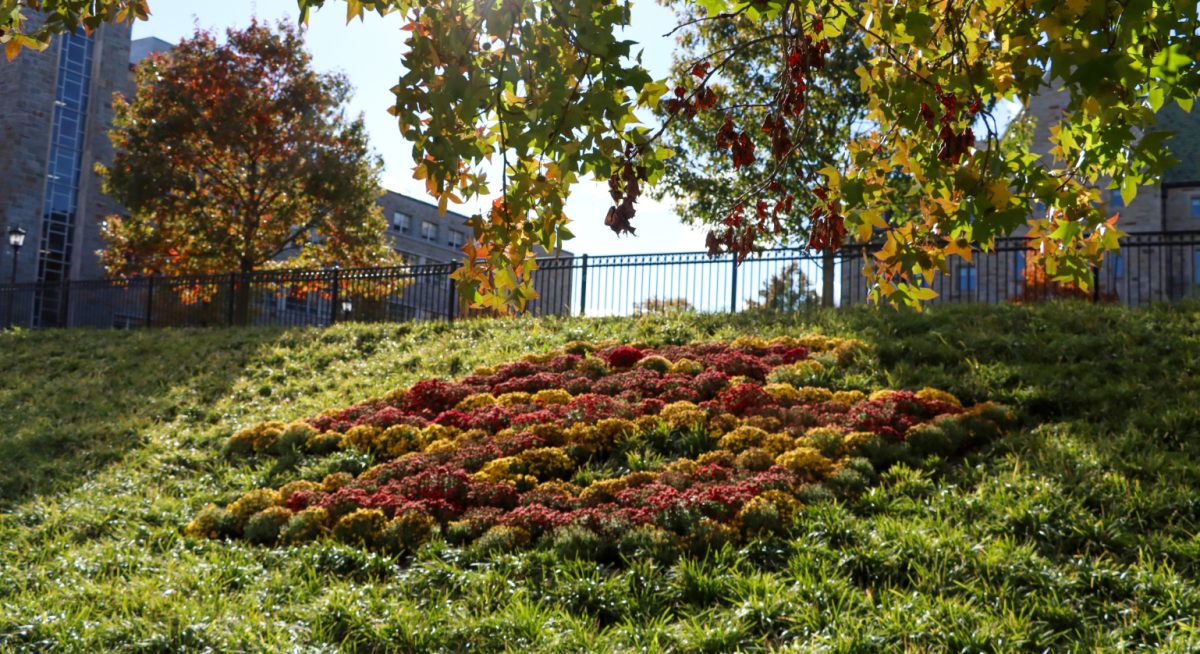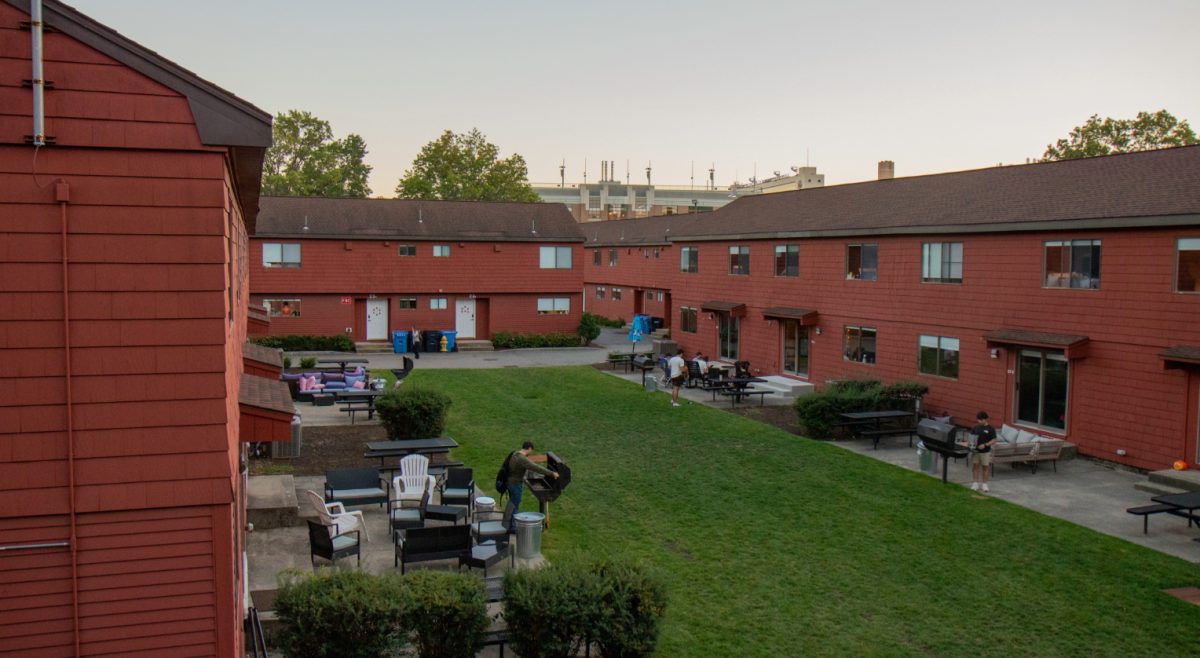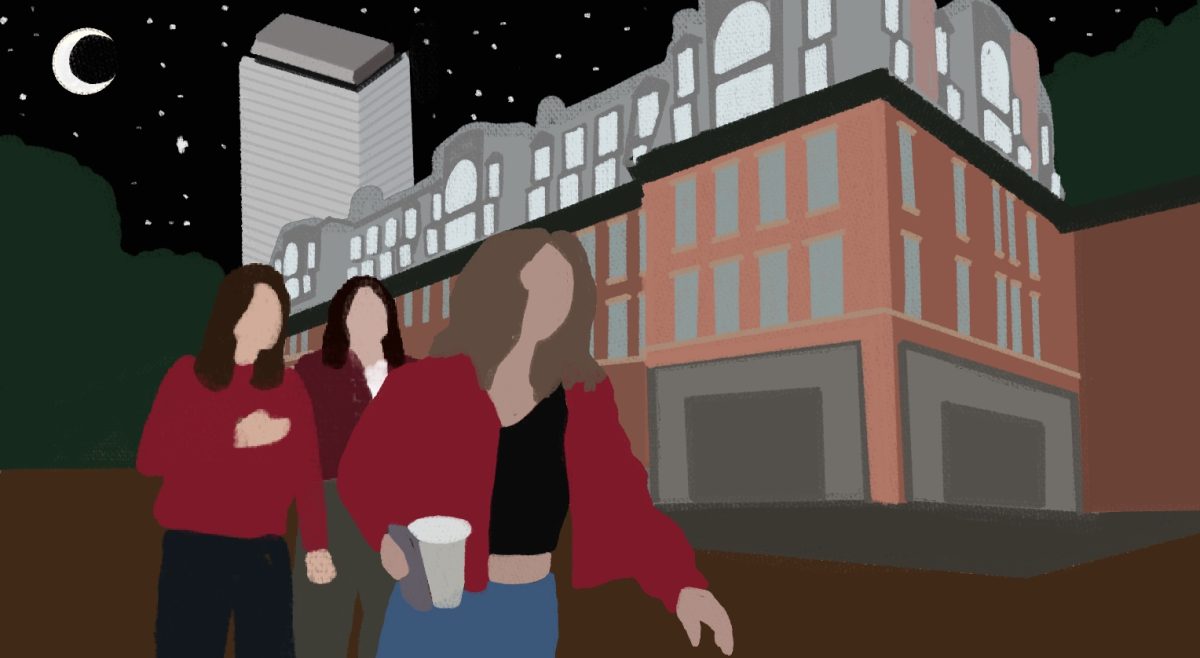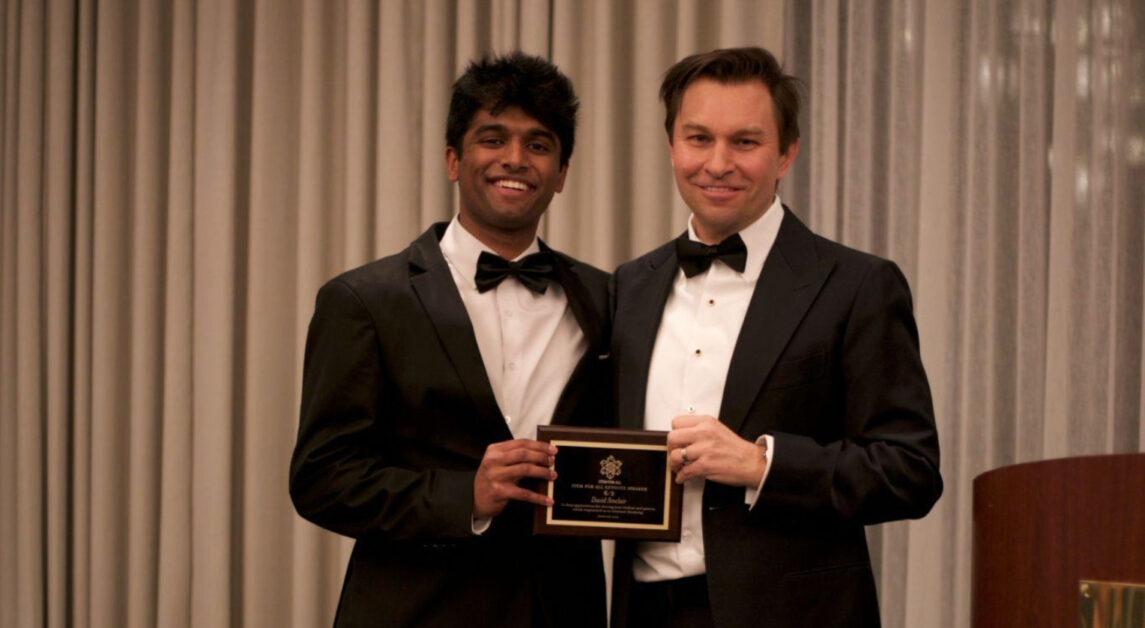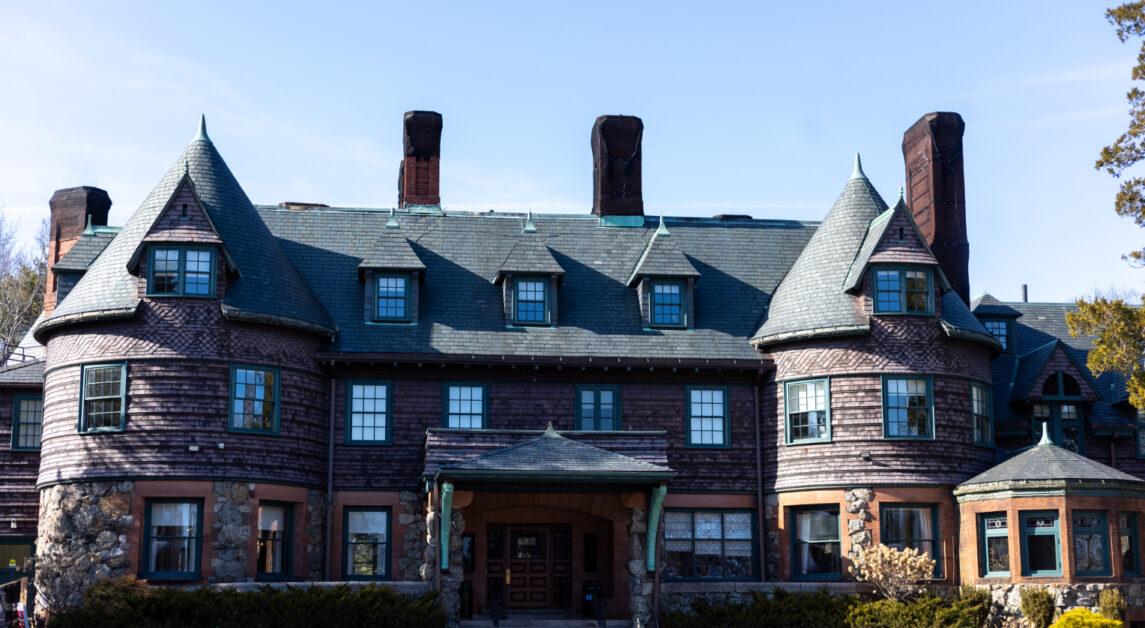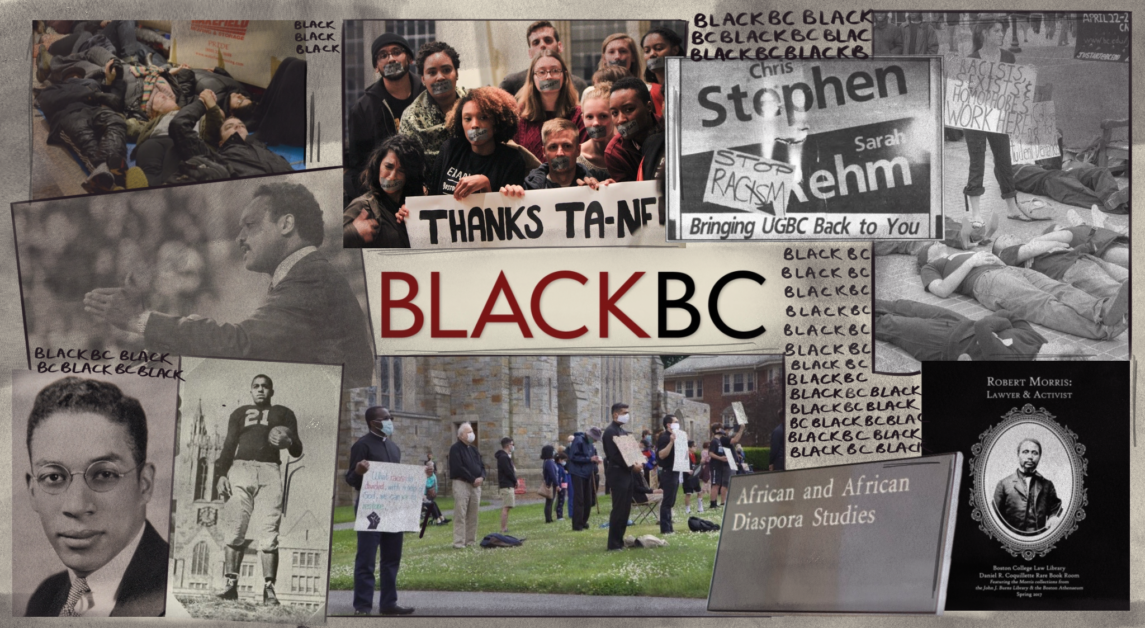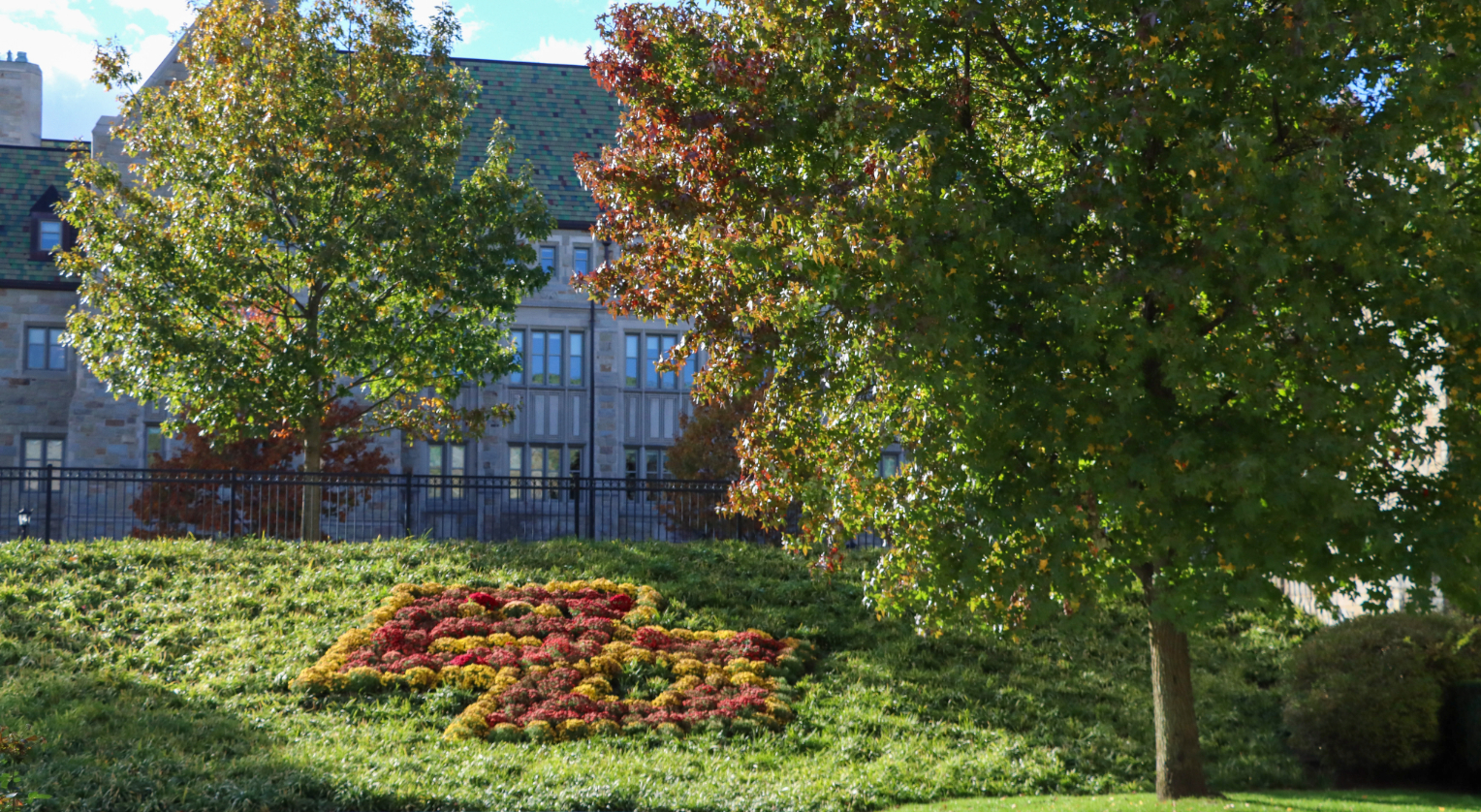
“We’re Here For Them”: The Team That Keeps BC’s Campus Picture-Perfect
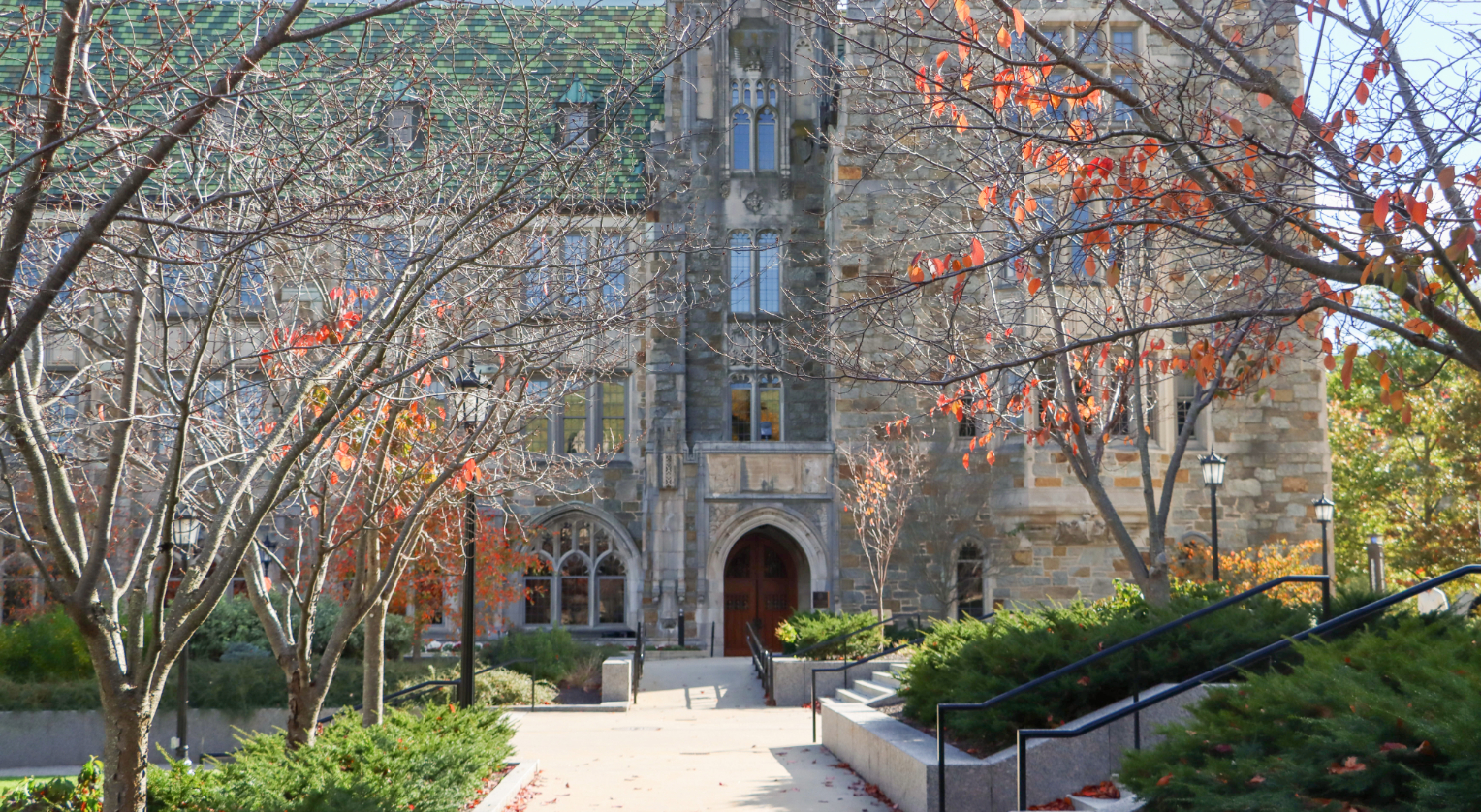
The red and yellow tulips across the street from Robsham Theater don’t magically grow into their signature “BC” shape. The mod lot doesn’t magically return to normal after Saturday tailgates, free of crushed cans and flying food wrappers. And the reason students aren’t falling down the Million Dollar Stairs in the winter has nothing to do with heated steps.
Behind it all: Boston College Landscape Services.
This fall, Landscaping Services is busy planting 45,000 tulips, clearing up fallen leaves from 7,500 trees, and mowing 110 acres of grounds to Quad-picnic perfection.
But for this crew, the work is about more than just maintenance—students are at the heart of everything they do.
Landscaping Services’ objective is simple: maintenance for the sake of student enjoyment.
Scott McCoy, associate director of landscape services, is leading the charge.
“It’s our objective to provide a safe environment for our students and the general campus community to enjoy the academic experience,” McCoy said. “ We have the overarching goal of creating a campus aesthetic that combines a safe environment with beauty.”
Benchmarking data against peer universities of similar size and stature has shown that the team has largely met its goal, according to McCoy.
“People appreciate the aesthetic of the landscape,” McCoy said.
It’s hard to pin down exactly what makes the BC landscape so captivating. For McCoy, it comes in the form of architecture, history, and conversation spaces.
“There’s an aspect to the aesthetic here that is unique to this place,” McCoy said. “It has a lot to do with the Gothic style architecture as the basis for that. There’s great history with this property, and there’s been an evolvement that’s founded on our ability to provide open and beautiful spaces that people can enjoy and have conversations.”
When the weather is nice, students take advantage of outdoor spaces, flocking to O’Neill Quad, Stokes Amphitheater, or any grassy patch they can find to catch a few UV rays between classes.
“If you go to walk to class on any given day, you see people out in outdoor spaces, and they’re sitting and talking,” McCoy said. “If it was mud or overgrown or not kept, I think people would be less apt to utilize spaces like that.”
Maintaining these picturesque spots takes a village. According to McCoy, the Facilities Management team is composed of 35 people, with 29 landscapers divided among various roles.
Workers are classified into three levels based on their experience, McCoy added.
The first level has the most base level qualifications, while those in the second level typically hold hoisting licenses that allow them to operate heavy equipment, such as frontend loaders, backhoes, and other machines. Most of the workers in the third level have advanced training as irrigation-certified technicians or pesticide applicators.
Within the gardening team specifically, level one positions typically require a two-year degree, while level two positions call for a four-year degree. Members of the gardening team also possess a range of state certifications as landscaping professionals, horticulturists, and irrigation technicians, according to McCoy.
While the number of workers in levels one, two, and three are usually evenly distributed, it varies based on operational need.
Additionally, McCoy said the team is split up geographically across BC’s four campuses. Two workers are responsible for the Messina and Brighton Campuses, while two or three cover the Newton Campus. The rest work on BC’s main campus, where they are further divided into groups of three to six.
On a typical day, landscaping workers report to the same working area for a 7 a.m. to 3:30 p.m. shift, according to Grounds Supervisor Michael Collins.
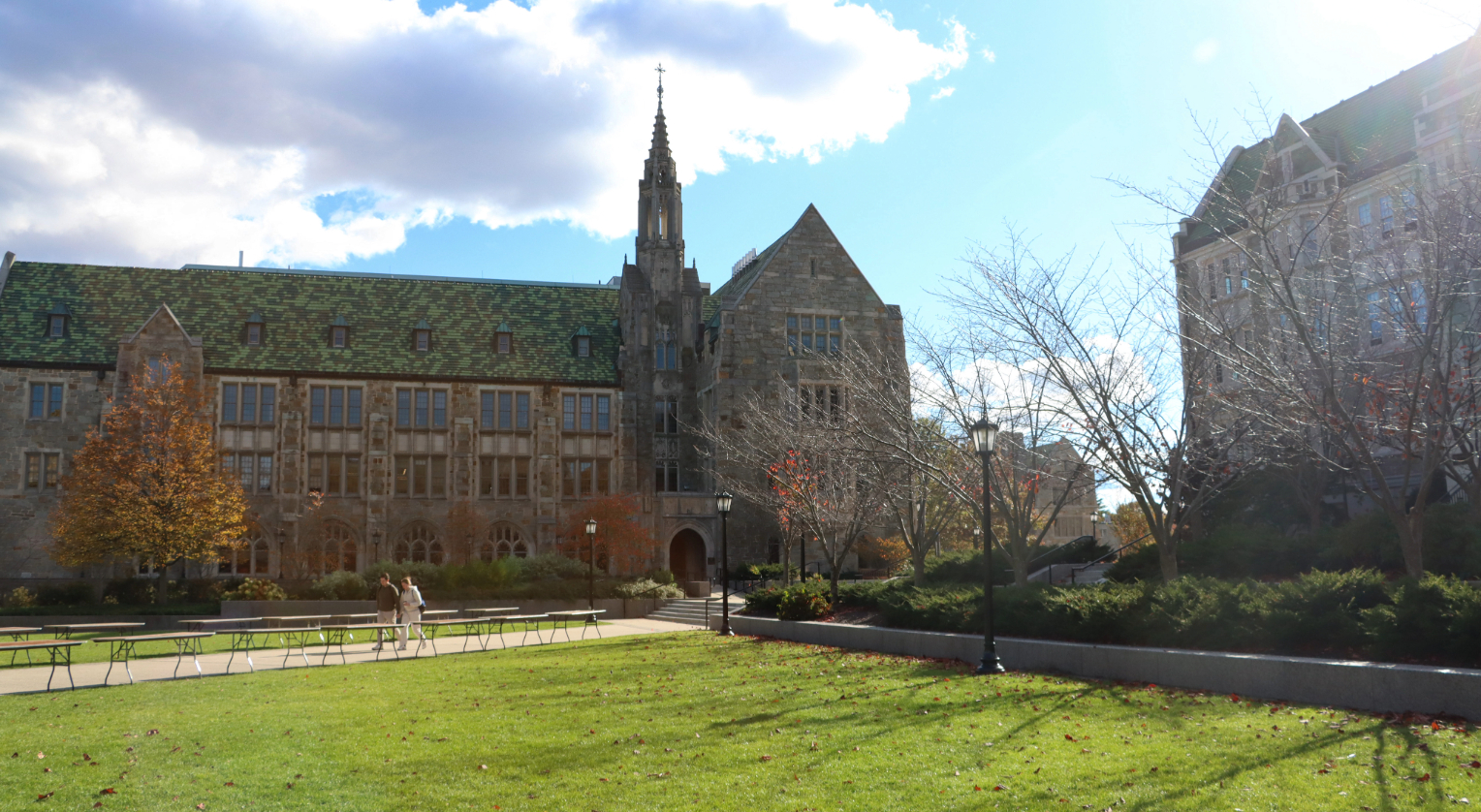
Students are not just at the center of Facilities Management’s efforts—each year, around student workers join the team.
Eric Hiebert, BC ’27, one of the student workers, recalled that the landscaping team did not hesitate to welcome him into their community.
“The older guys are very inclusive,” Hiebert said. “They will talk to you, get to know you, are interested about your lives,” Hiebert said. “They’re just great people in general, and they’re really funny. So once you become integrated in your crew, it’s really fun, because it feels like a crew, and you’re all in together.”
Training student workers and fulfilling their own duties are hardly burdensome to the crew, according to Hiebert.
“They all had a positive attitude and were excited to have students working with them,” Hiebert said. “They make working feel like it’s not all a chore and all a job.”
For the student workers, some daily tasks required more effort than they initially expected.
“It’s often in the early morning hours where you don’t see it,” Hiebert said. “The grass—I think in the spring, in the summer, in the fall—it grows insanely fast. It needs to be cut every week, and the whole campus needs to be cut every week, which is a big task.”
Hiebert saw firsthand the passion landscapers bring to their work.
“You could tell that they took pride in BC’s campus,” Hiebert said. “And they weren’t just like employees. They actually cared about making it nice.”
For the crew, the devil is in the small details.
“They would tell you about how to make it look better, how to improve on certain things, and not just because they had to,” Hiebert said. “It’s because they would go around and check and make sure everything looked nice.”
Hunter Harris, a junior at Boston University who works for BC landscaping, noticed how the landscapers seem to stick around.
“It seems like they enjoyed [their jobs],” Harris said. “One has been there for five [years], another one had been there for like 20.”
Ultimately, the student workers take away something other students may never fully understand.
“I just learned how much care and effort goes into making [BC] look like that,” Hiebert said. “And you think, ‘Wow, this is beautiful,’ but you don’t realize how much work goes into it.’”
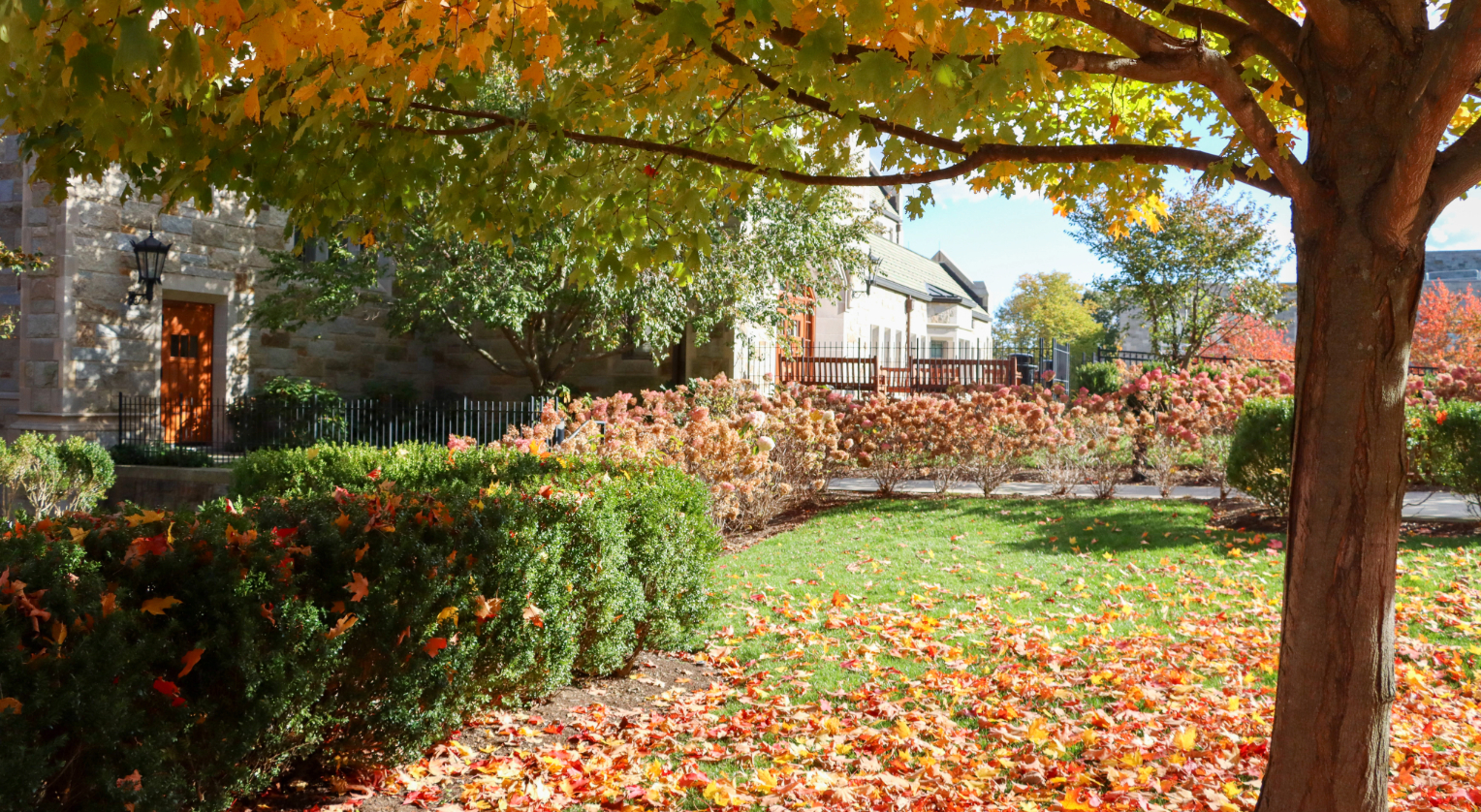
BC Landscaping’s work changes with the seasons.
“In the summer, we try and get a lot of planting projects done,” Collins said. “Things that kind of are a little outside of our core scope of work. But outside of that … they stay in the same area every day.”
The winter brings a host of challenges, as BC’s campuses quickly create hazardous walking conditions when snow and ice set in.
“The snow and ice management is a very stressful and serious part of what our working group does,” McCoy said. “We take that very seriously.”
BC’s staircases, in particular, pose major safety concerns.
“Most of our staircases are constructed of stone,” McCoy said. “That requires diligence and a serious operational matrix to ensure that people can get from your dorm to the dining hall in a safe way.”
The Million Dollar Stairs require extensive maintenance. Contrary to what some students believe, McCoy said they are not built with heaters.
“The Million Dollar Stairs are not heated,” McCoy said. “Someone’s actually up there at three o’clock in the morning shoveling them. I don’t know where that started.”
For now, a shovel is the only magic clearing your way to class.
In the winter, BC also contracts with an outside firm to help with snow removal.
Still, when storms are particularly severe, they are memorable.
“We call it the Valentine’s Day Massacre,” McCoy said. “There was a really bad ice storm here, obviously in and around Valentine’s Day. I don’t remember the year. I’m trying to block it out.”
The fall also brings a beast of its own: BC football.
“Football Saturday is a very busy day for us,” McCoy said. “We’re responsible for all trash and recycling issues on that day, and we clean up campus.”
In practice, this means the landscaping team will clean from dawn to dusk—clocking in 13 or 14 hour weekend shifts.
Cleanup is no small task, as students, parents, alumni, and locals alike flock to campus on gameday, hauling coolers, baked goods, and grilling supplies to parking lots and green spaces.
McCoy said the mess is exacerbated by the perception that littering is acceptable during gamedays.
“There seems to be this thing, like, you can just throw [trash] on the ground,” McCoy said. “I don’t know that I’ve ever gone anywhere where I felt obligated to throw anything on the ground for somebody else to pick up.”
But campus doesn’t just come alive on gamedays. Student organization and University events take place on a daily basis, adding another dimension to the team’s duties.
It isn’t simply cleanup that Landscaping Services has in mind, but also meeting a high bar to maintain campus’s appearance.
“There certainly are expectations about the level of work that we try to accomplish every given day,” McCoy said. “It’s tricky sometimes because we’re pulled in a lot of different directions, and because we have all these beautiful spaces, there’s a real desire to use them. So, I guess it’s a little bit tricky.”
McCoy says he wouldn’t have it any other way, though.
“We have such a vibrant campus that’s community-driven, and people want to get together in spaces,” McCoy said.
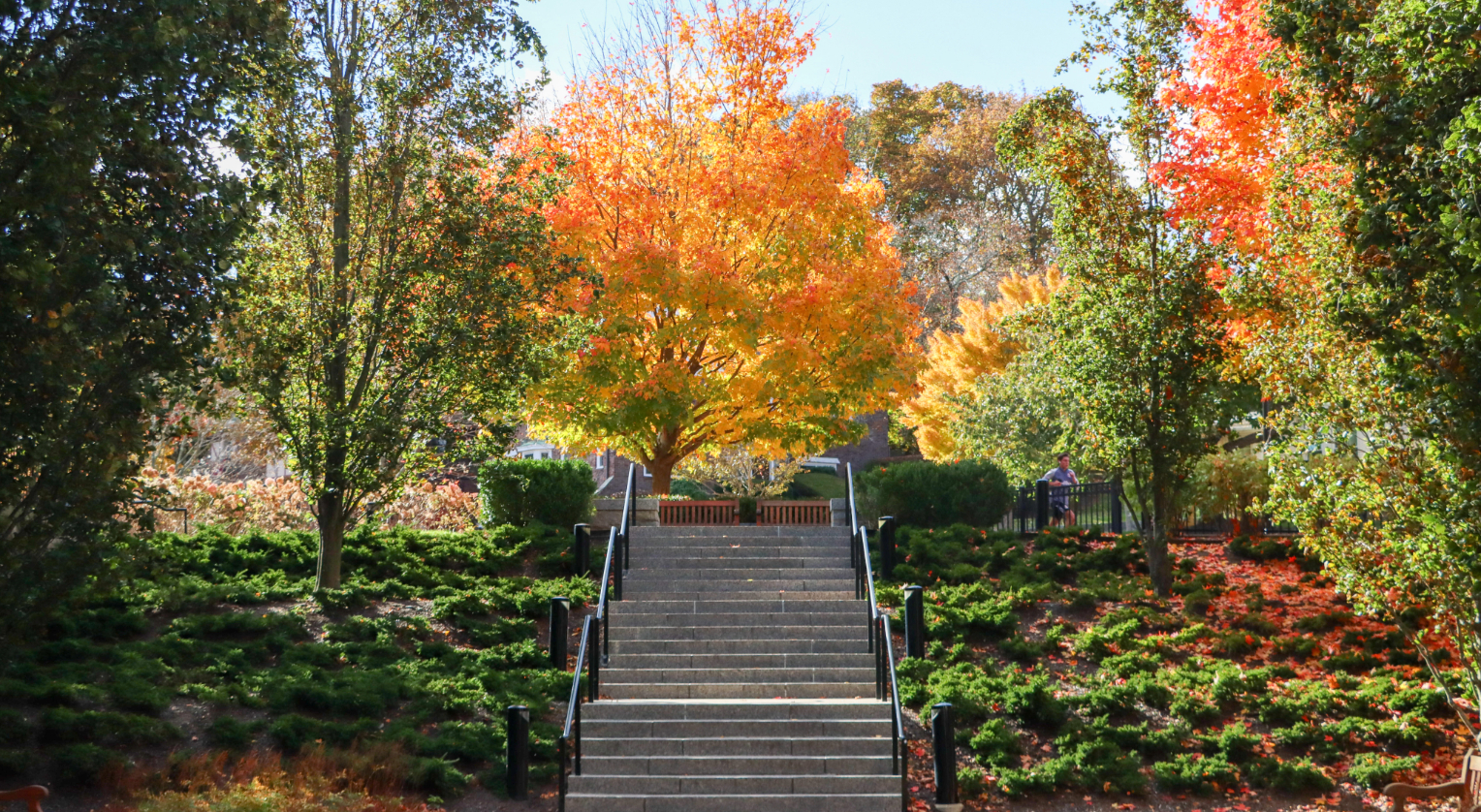
The high bar Landscaping Services sets for maintaining the grounds extends to their approach to sustainability.
Sustainable landscaping at BC takes a few main forms—water conservation through irrigation, integrated pest management, and composting.
Across campus, moisture sensors determine what a normal irrigation cycle should look like and adjust irrigation levels based on rainfall levels.
Though they don’t have the data, McCoy believes that Landscape Services’ water usage rates have gone down significantly over the past five years.
Integrated pest management, which entails testing the soil and regularly inspecting plants, dictates the division’s approach to plant care. BC Landscaping doesn’t use pesticides, herbicides, or other similar substances, unless there is a warranted need.
The soil itself is often . Brush—separated into brush piles, grass, and leaf clippings—is sent off to a composting facility, transformed into soil, and then repurchased by BC.
Although these measures require additional efforts, McCoy says the group is confident they are the best approaches, according to McCoy.
“I mean, maybe it would be easier to do it a different way,” McCoy said. “But that’s not the foundational theory that we operate on in our working group.”
For McCoy, the team owes it to the land they are caring for to go the extra mile.
“I see us as stewards of the environment and responsible for a very valuable capital asset, and I don’t see any reason that we would cut corners,” McCoy said.
They are caring for something living, and this requires care and effort, according to McCoy.
“It’s not a piece of HVAC equipment or a light which is generally in the place that you left it the day before,” McCoy said. “You take care of a living thing, and the environment is always changing, and you have to see it on a regular basis in order to manage it properly.”
Maintenance is oriented toward long-term sustainability, and the team is constantly looking for new ways to work toward this goal, according to McCoy.
“We continue to look at ways to offset our carbon footprint by changing some of the equipment that we’re buying, getting away from gas powered, and then this continued effort to reuse our horticultural waste that will continue to evolve as time goes on,” McCoy said.
McCoy detailed how the team is constantly re-evaluating areas on campus for potential improvements.
“We’re always looking at spaces and looking at what plant material is working in a particular location and making decisions about what might be best—not only for the environment, but from a sustainable perspective as well,” McCoy said.
This framework is guiding long-term planning.
“That’ll create the new working plan for the next five to 10 years as a result of doing the inventory that re-evaluates each tree from a rich standpoint, or general health standpoint,” McCoy said. “And then we can make decisions about what the priority should be in terms of maintenance.”
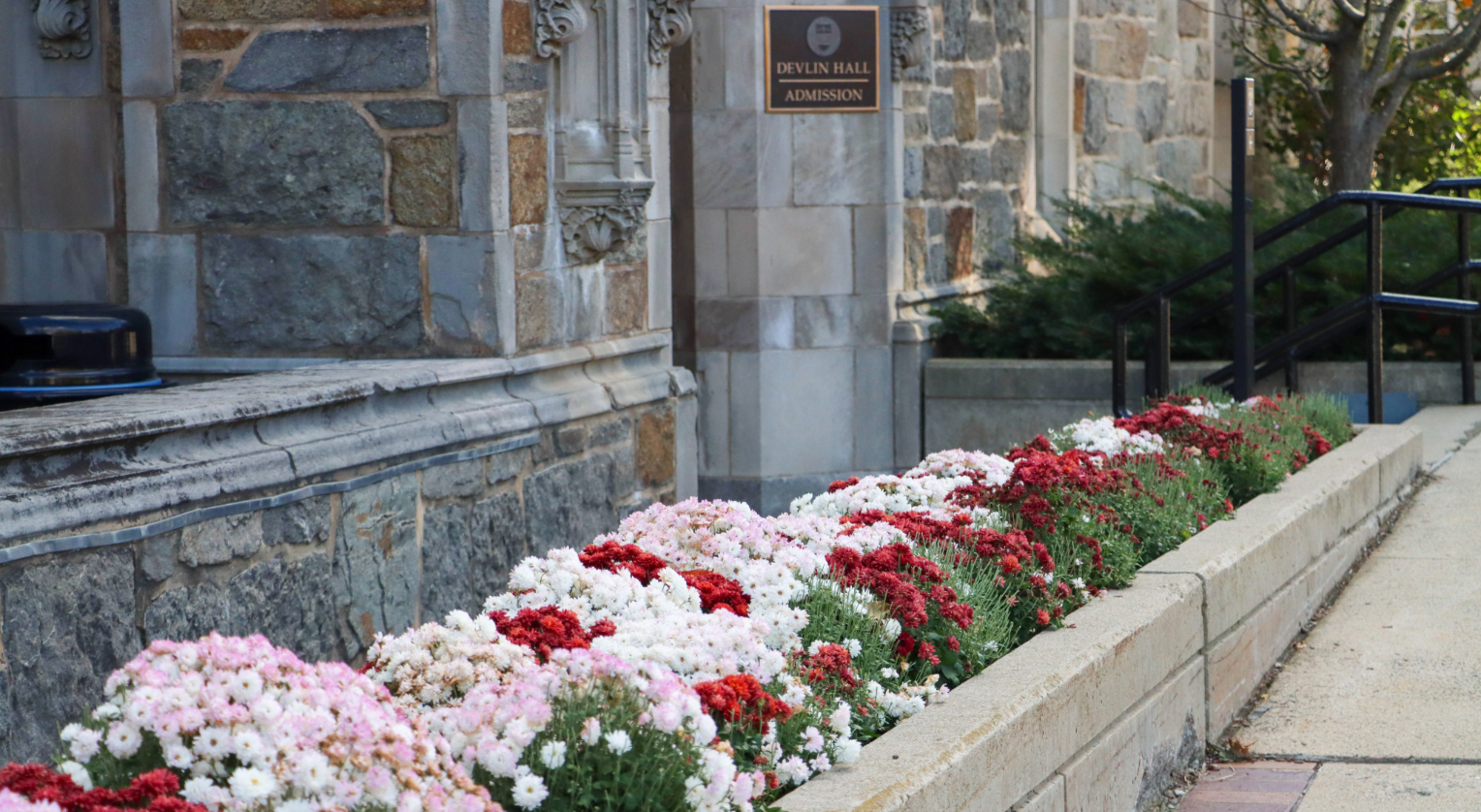
Landscaping Services’ dual commitments to sustainability and BC students come together in a partnership with the environmental studies department.
Tara Pisani Gareau, director of the environmental studies program and a professor of the practice, has worked with Landscape Services on several projects over the years, taking the form of both independent student research projects and group projects in senior seminar courses.
Their collaboration began when Pisani Gareau reached out to landscaping staff, who set up pollinator prairies on campus to examine bee diversity and overall presence on campus.
As it turns out, they were more than willing. The project has continued, even being utilized by students in Pisani Gareau’s ecosystems class.
Landscaping is really here to help students, according to Pisani Gareau.
“If you have an idea, a project that involves the landscape and planting, I think they’d be willing to work with you,” Pisani Gareau said.
Getting a project started was surprisingly easy, according to Pisani Gareau.
“I guess I anticipated having to invest more time, energy resources toward it in the beginning,” Pisani Gareau said. “And they’re very willing to just be like, ‘Sure we’ll help you out. We’ll do this.’ I thought that was awesome.”
More than that, according to Pisani Gareau, Landscaping Services can serve as a valuable source of environmental information.
“They have their planting lists, and they have a lot of information,” Pisani Gareau said. “So I think there are actually a lot of opportunities to work with Landscaping on a project that you had.”
Pisani Gareau said their expertise has been underutilized by both students and faculty.
“I feel like they’re an untapped resource,” Pisani Gareau said. “We have some really nice opportunities to work with the folks who manage the campus, especially when there are questions on sustainability or environmental questions.”
Students have explored BC sustainability in the past, and Pisani Gareau has taken note of the positive results they’ve found.
One student looked at pollinator habitats at BC, discovering a “pretty good proportion” of plants—about half of them—to be native to the area, said Pisani Gareau.
These plants are more important than ever, according to Pisani Gareau, as insects—esepcially pollinators —are declining across the world, suffering from lack of flowering habits.
Planting, then, is about much more than creating campus eye candy.
“It’s one of those things that we can do to help creation here and think about our landscape as not just a place that’s beautiful for us to walk through and take pictures, but also one that can provide a habitat for non-human species,” Pisani Gareau said.
From what Pisani Gareau has seen, BC is on the right track, thanks in part to the efforts of Landscape Services.
“They do such a great job in terms of sustainability,” Pisani-Gareau said.
The landscaping team isn’t sure how much students actually pay attention to their work, both in general maintenance and sustainability.
“I wonder how much they appreciate seeing our different ideas— the work that goes into it, our work after football games, the long hour jobs that we have,” said Michael Collins, Grounds Supervisor of Landscape Services.
Anthony Erwin, lead gardener, has had similar thoughts while on the job.
“Oftentimes I wonder how many of them actually pay attention to the landscape as they walk to class,” Erwin said. “I think to myself when I’m working, ‘I wonder if any students got to notice this tree that I just planted.’”
Though the students may not notice the work being done, they are always at the core of landscapers’ considerations.
“We don’t want to disrupt students,” McCoy said. “We look for our opportunity space around what they are doing.”
Class transition periods pose a unique challenge, according to McCoy.
“We kind of have to stop for that little transitional period,” McCoy said. “Manny might go over there with the cutting unit getting ready to do his work, and he has to go out there and talk to the students about moving spikeball over a few feet, and moving the volleyball.
This even extends into working hours.
“We don’t try to make noise in the morning,”said Landscape Services worker Osiris Mejia. “We wait till after nine o’clock to go if we need to walk around the dorms.”
McCoy is looking for even more ways to make as little disruption as possible.
“We continue to evaluate things, specifically design and equipment,” McCoy said. “I’m not crazy about the noise associated with leaf blowers. That’s one of the things that is really difficult for us. We’re trying to do our work. But then this is a college environment, I would find it irritating if I was sitting in Gasson and we’re outside cranking the leaf blower.”
While they may not notice everything, students appear grateful for the work Landscaping does, according to McCoy.
“They always seem thankful,” McCoy said. “And they are all really, really nice about it. So we just try to do our thing every day.”
Collins reiterated this sentiment.
“I do think in general, students are appreciative,” Collins said. “When we go into the Mods at 3 a.m. on commencement morning, that’s when we get a lot of compliments. That goes a long way at that hour of the day.”
The Mods, specifically, have seen a lot of landscaping improvements in recent years, including the addition of plant foundational material outside the buildings and irrigation in the back lawn areas that have improved the grass. This care seems to have inspired students to take better care of the area, according to McCoy.
“It seems like students have a little more respect for their own space,” McCoy said. “They’re tidying up their furniture and keeping their backyard organized and neat. I think that’s a reaction to seeing us care about the space or try to make the space better for them.”
Erwin has seen this care displayed in other ways as well.
“I think they’ve been doing a good job,” Erwin said. “Last night, when I worked a function, all the students were picking up the trash and throwing it in the cans.”
These little things don’t go unnoticed, and when students express appreciation, it only strengthens the team’s efforts.
“The tulips are a big hit,” McCoy said. “We actually put quite a bit of thought into the color schemes. And we try to do different things in different places annually.”
In everything the team does, students are the priority.
“We’re here for them,” Collins said.
This sentiment is from the heart, according to Mejia.
“We love to do what we do,” Mejia said. “And now we do it for students. So everything, we do it for them.”


